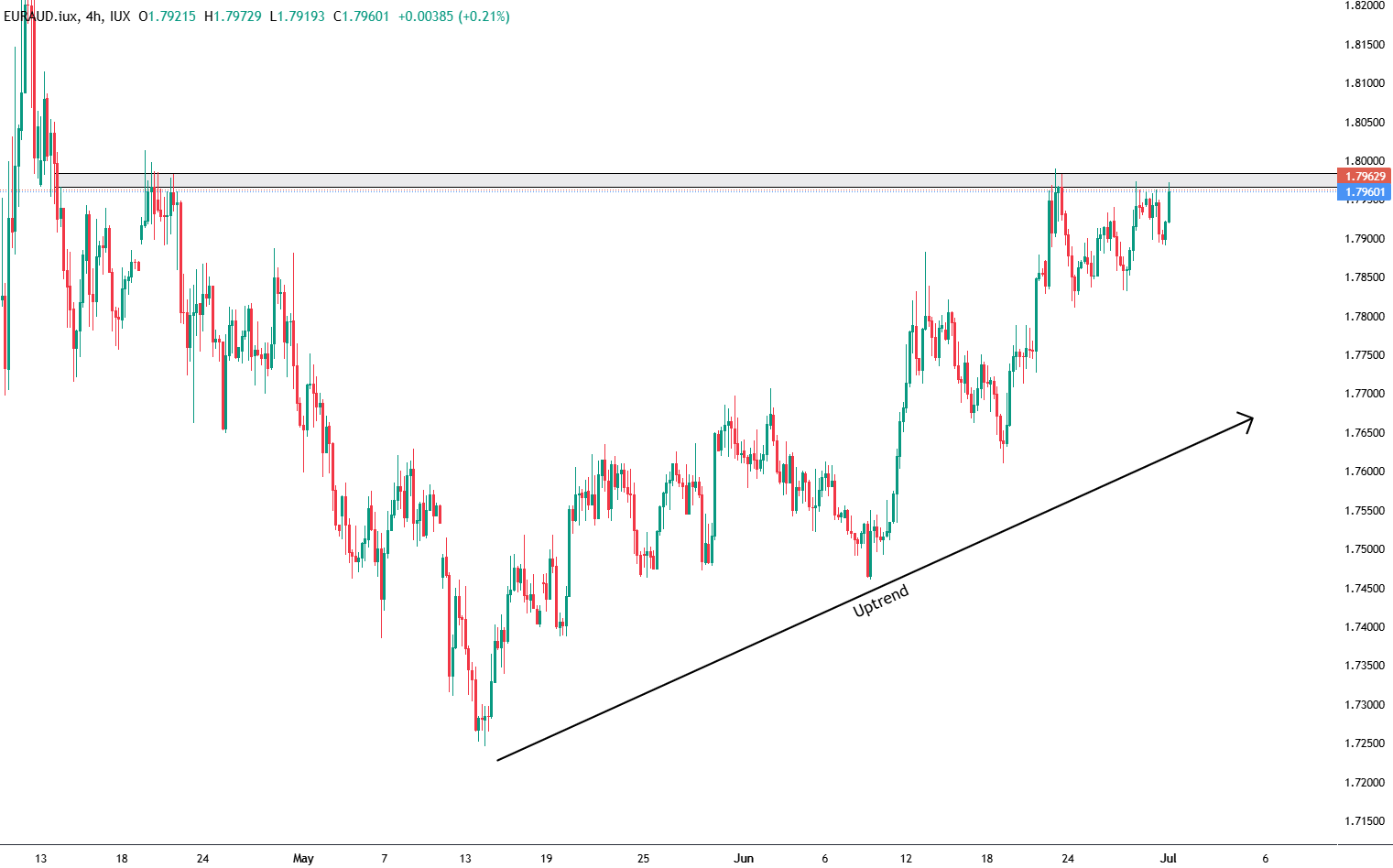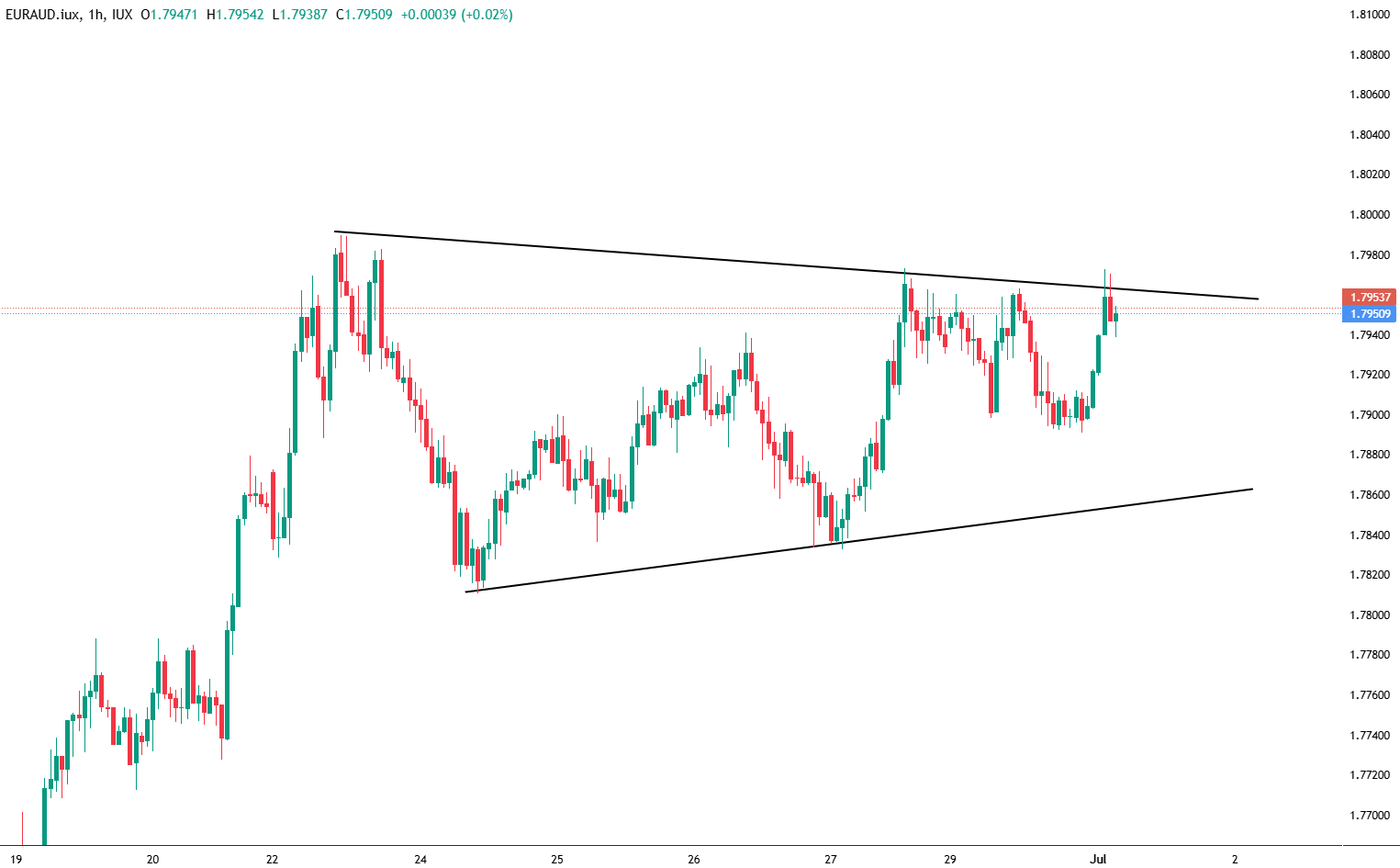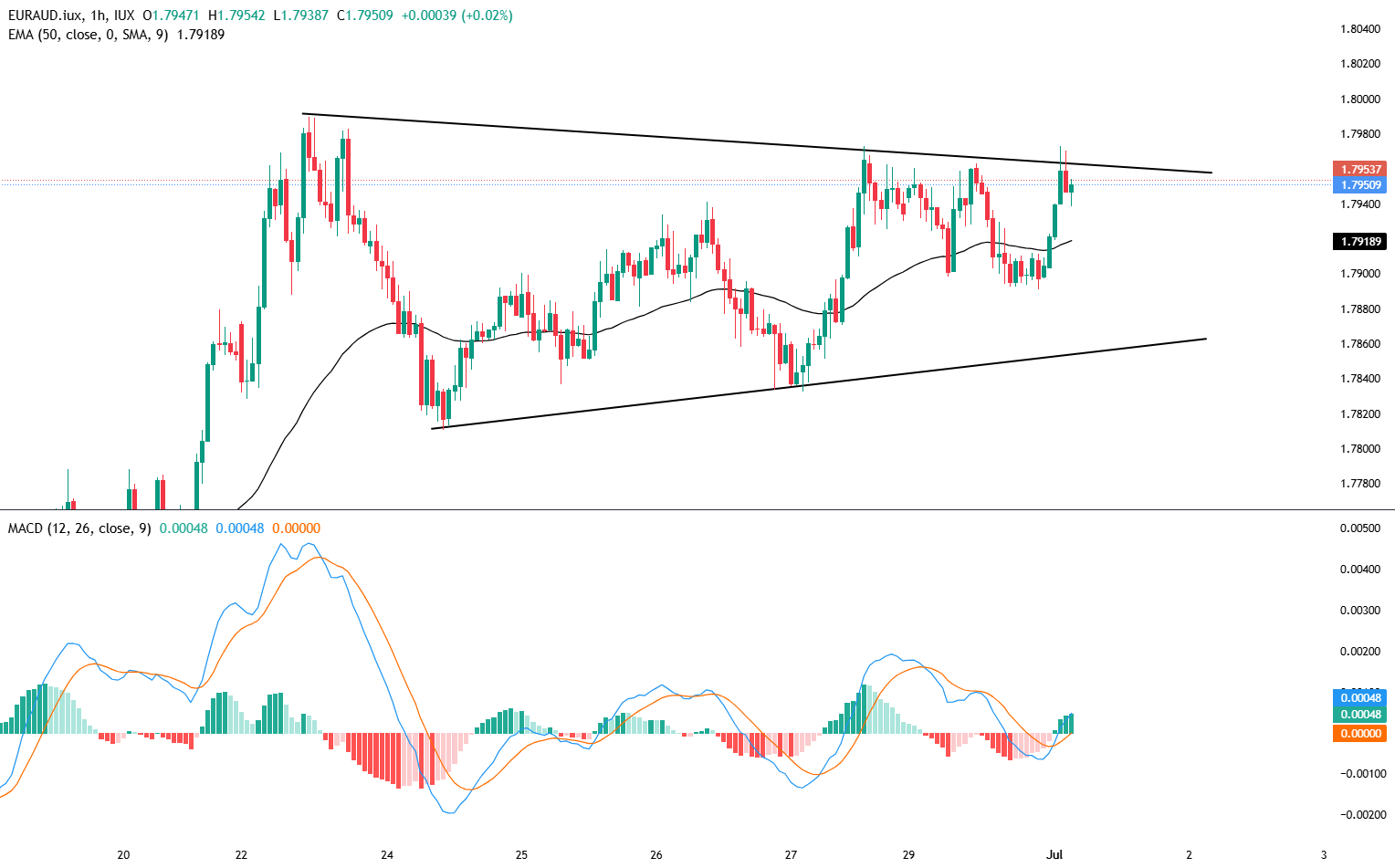Since May 13, 2025, has been slowly moving up after a sharp drop from the previous resistance. But now the price is back to touch the resistance area at (1.79663 – 1.79840) which will be tested this week.
Fundamental Analysis for this Week
There are several fundamentals that will have an effect on market movements this week, namely.
Time | Currency | Event | Actual | Forecat | Previous |
Tuesday 1 July 2025 | |||||
04:00 PM | EUR | Core CPI (YoY) | 2.3% | 2.3% | |
04:00 PM | EUR | CPI (MoM) | 0.0% | ||
04:00 PM | EUR | CPI (YoY) | 2.0% | 1.9% | |
Thursday 3 July 2025 | |||||
08:30 AM | AUD | Trader Balance | 5.080B | 5.413B | |
What is Core CPI
(Core Consumer Price Index) for the (EUR) is a key economic indicator that measures the annual change in the prices of consumer goods and services, excluding food and energy. These two components are excluded due to their high volatility, allowing Core CPI to reflect more stable, underlying inflation trends in the Eurozone.
Why is it Important
Key Inflation Metric: Core CPI helps assess long-term inflation pressure in the Euro Area more accurately than .
Impact on EUR:
- If Core CPI comes in higher than expected, it signals stronger inflation – the European Central Bank (ECB) might tighten monetary policy – EUR tends to strengthen.
- If Core CPI is lower than expected, it suggests weaker inflation – possible rate cuts or dovish tone – EUR may weaken.
Used by the ECB: Core CPI is a key metric in the ECB’s interest rate decisions, as it filters out short-term price shocks.
What Is Trade Balance?
Trade Balance is the difference between a country’s exports and imports over a specific period—usually reported monthly. For Australia (AUD), this is a key economic indicator because the Australian economy is heavily reliant on commodity exports such as iron ore, coal, gold, and .
Why Is Trade Balance Important
When exports increase, demand for AUD rises, since foreign buyers need to pay in AUD.
A trade surplus tends to strengthen the (AUD).
If the actual result is higher than forecast, AUD may appreciate.
If the result is lower than expected or shows a deficit, AUD may weaken.
Technical Analysis for This Week
If we go down to the H1 time frame, we will find one of the interesting patterns, the Symmetrical Triangle Pattern.
To take long positions, we need to wait for the price to breakout the line that is the current resistance, at the price range of 1.79777. If the breakout is accompanied by strong volume, then it is likely that the market will resume its rise.
But if the market breaks the support line, in the price range of 1.78303. Then we can take a short position to take the reversal momentum.
Several indicators are also supporting the upside of EUR/AUD. Currently, the market is above the 50 EMA and MACD has just crossed and formed a green histogram. Of course, to go short, we still need to wait for some further confirmation.
Levels & Zones to Trade USD/JPY
Support Zone
Long-term support 1.74932 – 1.74702
Medium-term support 1.78374 – 1.78144
Resistance Zone
Long-term resistance 1.82325 – 1.82095
Medium-term resistance 1.79663 – 1.79840
